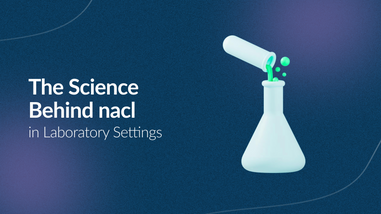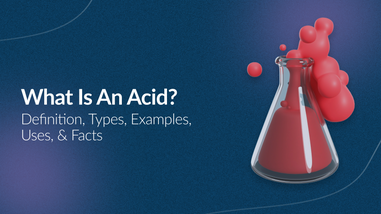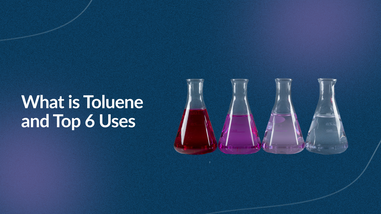- No products in the cart.
In high-compliance labs like semiconductor, biotech, and medical device facilities, keeping electronics clean is crucial. Sensitive components such as sensors, PCBs, and microchips can fail if even tiny amounts of oil, salt, or flux residue remain after cleaning. These contaminants interfere with conductivity, cause short circuits, and lead to costly downtime.
That’s why precision cleaning is so important.
The right solvent removes buildup without leaving any residue that could harm delicate parts. Most labs rely on alcohol-based cleaners because they evaporate quickly and leave surfaces dry and spotless. But not all alcohols are the same.
When it comes to ethyl alcohol vs isopropyl, many lab teams wonder which is the better choice for maintaining sensitive equipment. Both are effective.
However, thanks to their chemistry, evaporation rate, and material, they are suitable for different tasks. Understanding these differences helps labs protect their instruments, stay compliant, and reduce rework.
Key Takeaways:
-
Use high-purity (≥99%) solvents to avoid residue or corrosion on lab electronics.
-
Ethanol is gentler on plastics and rubber, ideal for delicate or coated components.
-
Isopropyl alcohol dries faster and leaves no residue, best for PCBs, sensors, and connectors.
-
Match the solvent to the contaminant: ethanol for polar residues, IPA for oils and flux.
-
Always store and handle both solvents safely in flammable cabinets with proper PPE.
-
For best results, use IPA for the first clean and ethanol for a final rinse.
-
Partner with a certified supplier like Lab Pro for consistent purity and compliance.
Understanding The Two Alcohols: Chemistry And Behavior

Cleaning Performance and Residue
Both solvents should be high-purity (≥99%) to avoid damaging sensitive circuits. Ethanol's slower evaporation allows polar contaminants like salts and acids to break down, making it a good option for gentle, thorough cleaning.
However, it may leave moisture if surfaces aren’t fully dried. IPA dries faster and leaves almost no residue. This makes it ideal for sensitive components such as PCBs, sensors, and connectors. It also helps prevent corrosion or electrical interference from leftover moisture.
PRO TIP: Use filtered, lint-free wipes pre-saturated with electronics-grade IPA to reduce static and ensure professional results.
Material Compatibility and Safety

Ethanol is gentler on plastics and rubber, reducing the risk of cracking or wear. It’s ideal for cleaning equipment with delicate materials such as elastomers and seals. IPA, being a stronger solvent, can make polycarbonate or acrylic parts brittle or cloudy over time. It’s best for metal and glass surfaces or areas requiring strong oil or flux removal.
PRO TIP: Always check compatibility and consult MSDS or manufacturer guidelines to avoid damaging components.
Volatility and Evaporation Rate
IPA evaporates faster due to its higher boiling point (82°C), reducing drying time. However, it has a higher flammability risk, especially in high-heat or poorly ventilated areas. Ethanol’s slower evaporation provides more control during cleaning, often making it the preferred choice for cleanrooms where precision is key.

PRO TIP: Both solvents should be used with proper ventilation, PPE, and grounding to prevent static discharge or ignition.
Cost, Accessibility, And Operational Efficiency
IPA is more widely available, affordable, and stocked in most labs. This makes it a practical choice for daily cleaning tasks. Ethanol is slightly more expensive and often regulated due to denaturing laws, but remains a trusted option when controlled evaporation and material safety are important.
PRO TIP: Both solvents are available in ready-to-use wipes, bulk containers, and refillable bottles, offering flexibility based on volume, workflow, and safety requirements.
Selecting The Right Solvent For Different Electronic Components
Not all lab electronics are the same, and neither are the materials they’re made from. Each equipment has its own tolerance for solvents, temperature, and moisture. Choosing between ethyl alcohol vs isopropyl alcohol depends on how each part reacts to the cleaning agent and what type of contaminants you need to remove. Using the wrong solvent can cause surface damage, corrosion, or unwanted residue that affects performance.
Here is a quick guide to help you match the right solvent to each component:
-
Printed Circuit Boards (PCBs): For PCBs, the best choice is IPA (99%) as it collects oils, flux, and fingerprints that can interrupt conductivity. It is also the best here because it evaporates quickly and leaves almost no residue. It penetrates small spaces, cleans effectively, and protects sensitive circuits from moisture buildup.
-
Sensors & Semiconductor Materials: For these types of materials, the best choice is Ethanol (95–99%). Its components are delicate and prone to corrosion. Ethanol is gentler and less likely to stress or crack fine coatings or semiconductor materials. Its slower evaporation also allows more controlled cleaning, ideal for precision work.
-
Connectors, Sockets, and Contacts: IPA is the best choice for cleaning this type of equipment. It dries fast, making it perfect for metal connectors that must be cleaned and reassembled quickly. It removes oils and oxidation layers without leaving residue that could disrupt contact points.
-
Rubber Seals or Gaskets: For them, the best choice is Ethanol. It is less aggressive toward soft materials, so it won’t cause hardening or cracking. It’s a safer choice when cleaning areas that include rubber or silicone components.
-
Optical or Glass Surfaces: For these types of surfaces, high-purity glass is the best choice. Both ethanol and IPA can be used safely on optical or glass surfaces, as long as they are electronics-grade (99%+ purity). Lower grades may leave streaks or moisture spots.
PRO TIP: Many labs use a two-step cleaning method. First, they use IPA to remove grease and residue, and then use ethanol for a final rinse. This reduces surface stress and ensures every component is spotless, dry, and ready for use.
Safety, Compliance, And Best Practices
Working with alcohol for cleaning electronics requires strict safety and compliance procedures to protect both lab staff and sensitive equipment. Even small mistakes in storage or handling can lead to contamination, fire risks, or audit failures. Here are the best practices that help you keep your lab safe, compliant, and inspection-ready.
-
Storage: Store both ethyl alcohol and isopropyl alcohol in approved flammable storage cabinets. Keep them away from heat sources, open flames, or direct sunlight. Always keep containers tightly sealed to reduce vapor buildup.
-
Handling: When handling any of the solvents, wear nitrile gloves, eye protection, and lab coats when working with alcohols. Use ESD-safe containers and tools to prevent static discharge. In high-purity applications, keep solvents in cleanroom-grade bottles. This will help to avoid cross-contamination.
-
Disposal: Never pour alcohols down the drain. Follow EPA and local hazardous waste protocols for collection and disposal. Label waste containers and store them in designated flammable waste areas until pickup.
-
Regulatory Compliance: Follow standards for handling and labeling flammable liquids. Use only filtered, residue-free solvents to maintain compliance and prevent contamination. Keep MSDS and lot traceability records on hand for audits, inspections, and safety reviews.
Lab Pro’s electronics-grade ethanol and IPA are validated through lot testing to meet ISO cleanroom and audit-ready standards, giving labs confidence in safety and compliance with every use.
Expert Recommendations: When To Use Which
Knowing when to use ethyl alcohol vs isopropyl can make the difference between safe, clean, and damaged lab equipment. Each solvent has its own strengths depending on the materials and type of contaminants you’re dealing with.
Choose Ethyl when
-
Cleaning sensitive plastics, rubber, or coated surfaces that could crack or discolor under stronger solvents.
-
Removing polar contaminants: salts, acids, or other ionic residues that can corrode components.
-
Working in cleanroom environments where slower evaporation helps maintain control and minimize static buildup.
Choose Isopropyl when:
-
Cleaning open circuitry, connectors, and printed circuit boards (PCBs) that need quick drying with no residue.
-
Removing non-polar contaminants like oils, grease, or leftover flux from soldering.
-
Prioritizing fast evaporation to reduce downtime and get equipment back into operation quickly.
For most labs, the ideal cleaning method combines both. Use IPA for the initial deep clean, then follow with ethanol for a final rinse to minimize surface stress and ensure a perfectly residue-free finish.
Ensuring Quality And Purity In Lab Cleaning Solutions
Choosing the right alcohol for cleaning electronics is only half the job. You also need to find a reliable supplier that ensures consistent purity and compliance.
At Lab Pro, we understand that reliability is very important in high-compliance environments. That’s why we offer a wide range of solvents like ethanol and isopropyl alcohol. Our products are validated through lot testing to meet ISO cleanroom and audit-ready standards..
With same-day delivery in California and next-day nationwide shipping, we are committed to supporting your lab’s needs without delays. When you choose Lab Pro, you’re choosing a trusted partner dedicated to helping your lab maintain the highest standards of cleanliness and compliance.
FAQ
Will using the wrong one- ethyl alcohol vs isopropyl alcohol for cleaning electronics- necessarily damage my equipment?
Not always, but misuse increases risk. For example, using IPA on delicate plastic housings may cause cracking, or using ethanol in high-moisture-sensitive zones may leave trace moisture. Proper solvent selection lowers risk of re-work, downtime, and failure.
How should I safely store and handle solvents when choosing between ethyl alcohol vs isopropyl alcohol for cleaning electronics?
Both solvents are flammable and require strict safety procedures: store in approved flammable liquid cabinets, use ESD-safe containers when dispensing near sensitive electronics, and always provide MSDS records and ventilation. The difference in solvent choice doesn’t reduce your need for rigorous handling practices.
Does the choice between ethyl alcohol vs isopropyl alcohol for cleaning electronics affect audit documentation?
Absolutely. Many high-compliance labs require lot traceability, MSDS certification, and cleanroom-grade packaging for solvents. Whether you choose ethanol or IPA, ensure your supplier provides full documentation to meet ISO / GMP / EHS audit standards.
What grade of solvent should I use when comparing ethyl alcohol vs isopropyl alcohol for cleaning electronics?
For lab-grade electronics cleaning, always select electronics-grade solvent (≥99% purity) with minimal water content. Lower grades can contain moisture, salts, or additives that leave conductive residues on PCBs and sensors, compromising reliability.












































